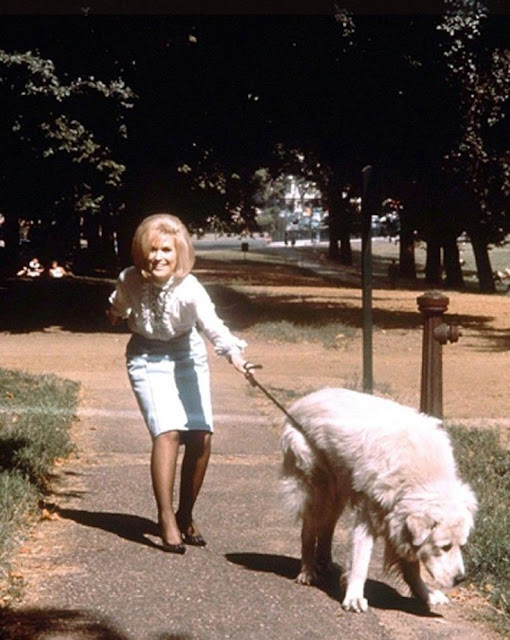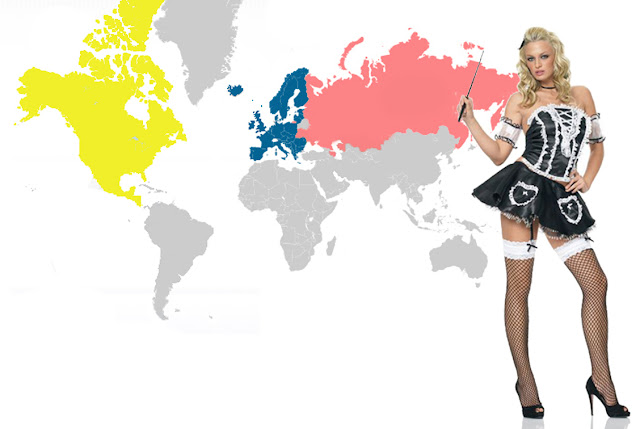-->
Here’s Beryl Markham writing in West With The Night, 1942, which is a
book about her travels in what was then British East Africa, now Kenya. “A map says to
you, ‘Read me carefully, follow me closely, doubt me not.’ It says, ‘I am the
earth in the palm of your hand. Without me, you are alone and lost.’”
Safe to say that Beryl Markham
never went to Tokyo, but I just did. I
walked a lot while I was there and most of the time I was carrying and
frequently consulting a map. Unlike Ms.
Markham I didn’t feel as though I had the earth in the palm of my hand. Mostly I felt as though I was carrying a
rather useless piece of paper.
Sometimes, of course, I was also consulting a rather useless graphic on
a cell phone screen. True, given the
dense population of Tokyo, I was rarely alone, but a lot of the time I was lost.
To be honest, only rarely was I
completely and utterly, irredeemably lost.
Most of the time I had some rough, nebulous idea of where I was, and I’m
enough of a psychogeographer to find that experience interesting, even
desirable, but getting from where I was to where I wanted to be was (let’s say)
challenging, and often confusing and ultimately downright exhausting.
Roland
Barthes had something to say about this.
In Empire of Signs he writes,
of Tokyo, “This city can be known only by an activity of an ethnographic kind:
you must orient yourself in it not by book, by address, but by walking, by
sight, by habit, by experience; here every discovery is intense and fragile, it
can be repeated or recovered only by memory of the trace it has left in you: to
visit a place for the first time is thereby to begin to write it: the address
not being written, it must establish its own writing.”
Not
completely sure about that, Roland. For
one thing I would say that by no means every discovery in Tokyo is fragile;
many of them are extremely robust, but they’re intense certainly. Still, does Barthes make Tokyo sound like my
kind of town. And it is.
I walked in Tokyo, I walked
a lot, in Shinjuku and Akihabara, in Ueno and
Yanesen and Roppongi Hills, and it was very alien in some ways,
surprisingly familiar in others. I mean
we’ve all seen those pictures of the big bustling neon lit main streets. And if we’ve seen the photographs of Araki
and Moriyama then we’ve seen the back streets and alleys too.
These images were accurate enough. I was rather more enchanted with the alleys
than the main streets, and of course we’re always told how safe Tokyo is. I
wasn’t taking anything for granted but I was probably less guarded as I walked
around the edgelands of Tokyo than I might have been in some other cities.
I took a couple of maps with me,
but once I got there I kept picking up dozens of the things. They seemed to be everywhere. Some, of course, were just tourist maps whose
main reason for existing wasn’t to help travelers go wherever they pleased, so
much as direct them to some very specific places, i.e. the businesses that had
paid to have advertisements on the back of these maps. This was a plain enough illustration that
maps are always in somebody’s interest, and that these interests may not
necessarily be the same as yours, though of course if you’re looking for a
sushi restaurant then these interests may coincide. Here's part of the collection:
There were also a lot of public maps, on street corners, in parks, in
stations, even sometimes in the sidewalk.
And I did find it some consolation that as I walked I saw many locals who
seemed as lost as I was. They too stared
at those street corner maps with as much confusion as I did. I’d also see them staring at maps on their
cell phones, sometimes using the cell phone to photograph the street corner map. It made me feel just slightly less of a
buffoon.
There were also these helpful signs directing you to
places where you could cross the street.
I’m an observer of these things. I have photographs taken in Suffolk, in England
only a few years back in which the walking man is wearing flared trousers, and
here the walking man was wearing a hat:
The parts of Tokyo I was in weren’t absolutely, completely free of
graffiti, but by any standard I know they were very limited, and such street
art as there was seemed very minor. I
don’t know if this means Tokyo really needs Banksy or whether they’d just throw him in
jail.
But oddly enough those street crossing signs were quite a target for
low level doodling and stickering and general abuse. I haven’t worked out why that is. Maybe it’s because of the hat.
Tokyo, certainly to a first timer, though I’d imagine
to anyone, seems to be a place of strange and complex and often mysterious spaces,
some are big and broad and strangely empty, elsewhere there are tiny alleyways
and gaps between buildings that are barely wide enough for a human being to walk
through, though the cats seems to like those places just fine.
And there are certain spaces, under freeways or bridges
or railway lines that do feel strangely different from their western
equivalents. In the west they might be
considered non-spaces, but in Tokyo they seem much more part of the fabric of
the city. Maybe that’s because there are
so many of them that if you thought of them as non-place then you’d have to
think of much of the city as a blank.
I walked reasonably far and reasonably wide, though I could certainly
have walked further and wider. Most of
the walking was not quite aimless. Generally
I was trying to get somewhere, say to a gallery or bookshop or bar or restaurant. More often than not I got there, but not
absolutely always. Still I was well
prepared for serendipity, and that I found in spades.
And if nobody was in any doubt that I was a tourist and didn’t belong
there, I never sense any hostility, nor frankly much in the way of curiosity
about me. Maybe this was an
illusion. If we accept that the Japanese
are a very polite race, maybe they were just too polite to express either their
hostility or their curiosity. Just one
old jogger came up to me and me where I was from and how long I’d been in
Tokyo, otherwise I was ignored as just another gaijin. I was prepared to settle for that.

Since I got back I’ve been reading Barrie
Shelton's Learning from the Japanese City. He writes, “To a Westerner,
the Japanese maps may be seen to fragment the landscape. The Japanese maps are
rather like a cubist painting where one can see on a single surface, many
aspects of a three-dimensional object which could not be seen from a single
static viewpoint. Considered another way, they may be seen to integrate the
landscape for they show it, as it is commonly experienced by the majority of
those who move through it. In other words, it is more a product of experience
than the Western map which is more one of intellect.”
I think I know
what he means, though of course I also think you could argue that one of the
main duties of a map is to offer information for people who don’t have experience of moving through a
given landscape. If you “commonly” move
through it then why did you need a map?
Shelton also
refers to an early eighteenth century map showing the whole of Japan, a map that
was 7 inches high and 28 feet long. I
haven’t seen this map and it doesn’t sound as though Shalton has either, but it
sounds a wonderful thing. I wonder if Ed
Ruscha knew about this map when he did his Every
Building on the Sunset Strip and Then
and Now). In any case, in honor of
this concept I did buy the map you see below, by no means as long and thin as
the 18th century map, but long and thin enough. Suitable for framing no doubt, but quite a
challenge for the framer.



























































